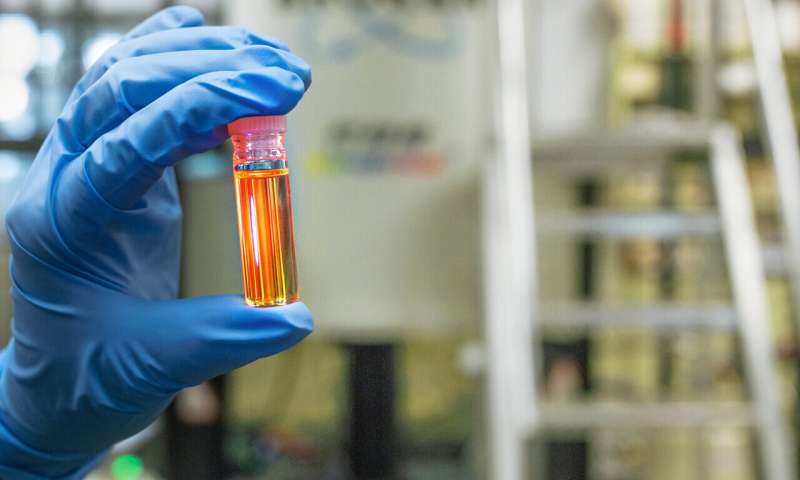Under the surface: Understanding the (ultra-small) structure of silicon nanocrystals

New research provides insight into the structure of silicon nanocrystals, a substance that promises to provide efficient lithium ion batteries that power your phone to medical imaging on the nanoscale.
The research was conducted by a team of University of Alberta chemists, lead by two Ph.D. students in the Department of Chemistry, Alyx Thiessen and Michelle Ha.
"Silicon nanocrystals are important components for a lot of modern technology, including lithium ion batteries," said, Thiessen, who is studying with Professor Jonathan Veinot. "The more we know about their structure, the more we'll understand about how they work and how they can be used for various applications."
In two recently published papers, the research team characterized the structure of silicon nanocrystals more quickly and accurately than ever before, using a cutting-edge technique known as dynamic nuclear polarization (DNP).
"Using the DNP technology, we were able to show that larger silicon nanocrystals have a layered structure that is disordered on the surface, with a crystalline core that is separated by a middle layer," explained Ha, who is studying under the supervision of Assistant Professor Vladimir Michaelis. "This is the first time this has been documented in silicon nanocrystals."
Silicon nanocrystals have proliferated through the world of scientific research. From applications in developing ultra-high capacity batteries to the next generation of medical imaging at the cellular level, their potential is seemingly endless.
"Understanding the structure of silicon nanocrystals is very useful," explained Thiessen. "By thoroughly examining the structure, we build our understanding of the properties of the crystals, which can in turn be used to optimize their function."
"And this will allow us to tailor the silicon nanocrystals to whatever application or field we want to," added Ha. "This research can impact many different areas of research, including the development of more accurate medical imaging technology to new, more efficient batteries. These silicon nanocrystals are extremely versatile."
Both Thiessen and Ha are students in the Alberta/Technical University of Munich International Graduate School for Hybrid Functional Materials (ATUMS) program, which allows them to experience an international cross-disciplinary research environment ans conduct aspects of their research in Munich, Germany.
The first paper, "Silicon Nanoparticles: Are They Crystalline from the Core to the Surface?" was led by Thiessen and published in Chemistry of Materials (DOI: 10.1021/acs.chemmater.8b03074). The second paper, "Endogenous dynamic nuclear polarization NMR of hydride-terminated silicon nanoparticles" was led by Ha and published in Solid State Nuclear Magnetic Resonance (DOI: 10.1016/j.ssnmr.2019.04.001).
More information: Michelle Ha et al, Endogenous dynamic nuclear polarization NMR of hydride-terminated silicon nanoparticles, Solid State Nuclear Magnetic Resonance (2019). DOI: 10.1016/j.ssnmr.2019.04.001
Alyxandra N. Thiessen et al. Silicon Nanoparticles: Are They Crystalline from the Core to the Surface?, Chemistry of Materials (2019). DOI: 10.1021/acs.chemmater.8b03074
Journal information: Chemistry of Materials
Provided by University of Alberta



















